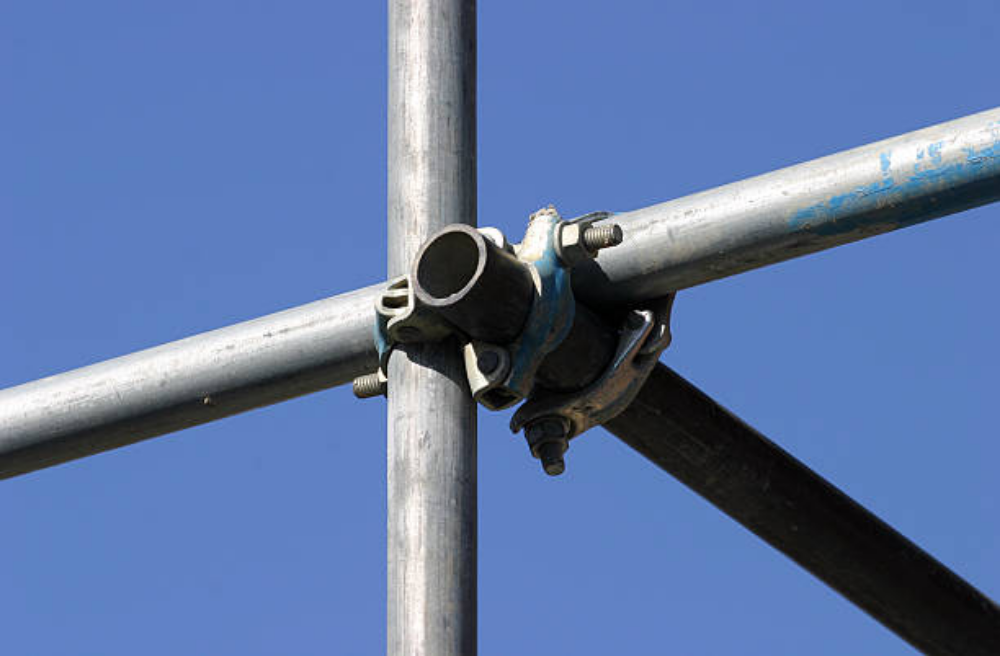Types of Scaffolding Tubes & Couplers Explained

Scaffolding tubes are metal sections of pipe used to construct a scaffold, which is a support system erected outside of buildings and structures being built.
Types of Scaffolding Tubes & Couplers Explained
Introduction to Scaffolding Tubes
Scaffolding tubes are metal sections of pipe used to construct a scaffold, which is a support system erected outside of buildings and structures being built. The scaffolding allows workers to access the upper levels of a building or structure safely by climbing these temporary structures and standing on platforms. Scaffolding tubes come in various lengths; this is to ensure that the structure of the scaffolding can be customised to fit a particular job. They are held together using couplers, which can also vary in size and function depending on the intended application.
Types of Scaffolding Tubes
There are three general types of scaffolding tubes: standards, ledgers, and transoms. Standards are the vertical scaffolding tubes that will act as the support for the entire structure. Ledgers run horizontally, usually between the standards, to provide lateral support. Transoms are smaller support tubes that run perpendicular to ledgers, and they are used to add stability to the structure and to provide a surface on which platforms can be placed. All of these different types of scaffolding tubes are connected by couplers that prevent excess flex or movement when the structure is completed. The tubes and couplers are modular, so different shapes, heights, lengths, and widths of structures can be built.
Steel and aluminium are usually used to make scaffolding tubes. Steel tubes tend to be heavier, but they are exceptionally strong as well. Aluminium tubes are much lighter, but they cannot support as much weight as steel tubes can. Sometimes composite tubes are used, though these tend to be fairly expensive and are not used nearly as often as steel tubes are. Scaffolding tubes can be cut to length fairly easily, and they are usually sold at a specific length — usually around 20 feet (6.3 metres) — and then cut accordingly. The width is usually a standard size as well, and the thickness of the walls can dictate how much weight the finished structure will be able to support.
In most cases, steel tubes are galvanised. This means they are coated with zinc, which will help prevent rust and corrosion due to exposure to the elements. Aluminium tubes do not generally need to be galvanised, as aluminium is fairly resistant to rust and corrosion. If the steel is not galvanised, it will usually be painted or otherwise chemically treated to protect it from weather damage. Steel does tend to bend when impacted, but it can be bent back into shape fairly easily; aluminium is more brittle and less likely to bend back into shape after an impact.
Introduction to Scaffolding Couplers
Scaffold couplers are essentially the fundamental component that is used to assemble tube-and-coupler scaffolding. Tube-and-coupler scaffolding is defined as ‘a scaffold in which individual circular tubes serving as standards, braces or ties are joined together by means of purpose-designed couplers’.
This basic fitting that is designed to join two scaffold tubes can be used to create a diverse range of scaffolding structures or used as an accessory to prefabricated scaffolding systems.
This manual includes basic types of scaffold couplers which join two tubes together as well as special couplers used to connect scaffold tubes to other components, equipment or structures. scaffolding clamp load capacity.
Types of Scaffolding Couplers
Rectangular Coupler
In buildings, rectangular couplers are standard in adding transformers. Depending on your specifications. Connectors as such are available in a variety of sizes, including 48x48, 43x43x48, 48x60, and more.
Rotary Coupler
These couplers are fairly handy when creating custom angles, which means they can connect two pipes at any possible angle. Scaffolding rotary couplers can be used to properly secure the connection between two tubes. Having said that, their main application is to place diagonal or cross braces between vertically aligned pipes.
Pratt Coupler
Some people refer to it as a single hook, pratt coupler is primarily used for lateral joints and cross pieces to strengthen the scaffolding. These types of couplings are used for scaffolding light activities simply because they cannot withstand so much weight.
Sleeve Coupling
Sleeve couplings are mainly designed to connect two scaffolding pipes externally at both ends. With that being said, the steel separator has a central position to ensure that each tube is inserted evenly into the other tube. They are crucial whenever tensioning joints are required, so they can be effectively used for long support and classification of pipes.
With That Being Said
Opting for a qualified scaffolding tube and coupler is of paramount importance to ensure ultimate safety of the working environment, so be sure that they have been meticulously checked before purchasing them. If you’re looking for durable, well-tested and competitively priced scaffolding tubes and couplers, Dura International can deliver them all.
Dura International is committed to the continuous improvement of its products. With ample knowledge and rich experience in hand, you can trust our team in supplying all sorts of scaffolding tubes and couplers that meet your requirements.
